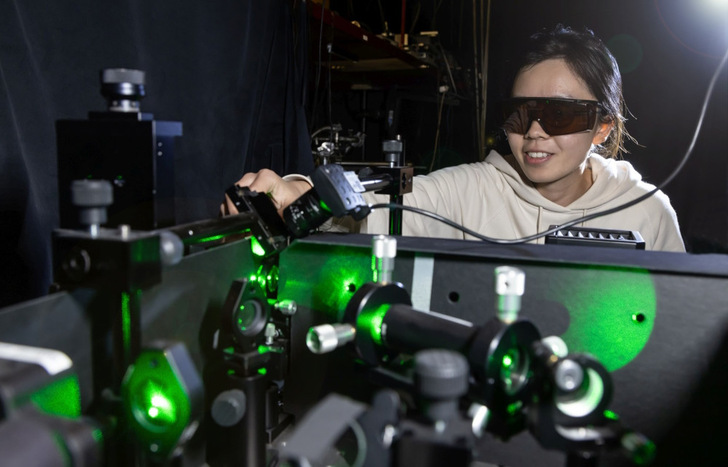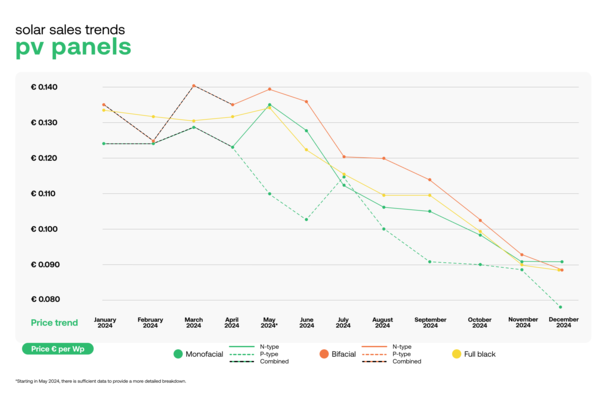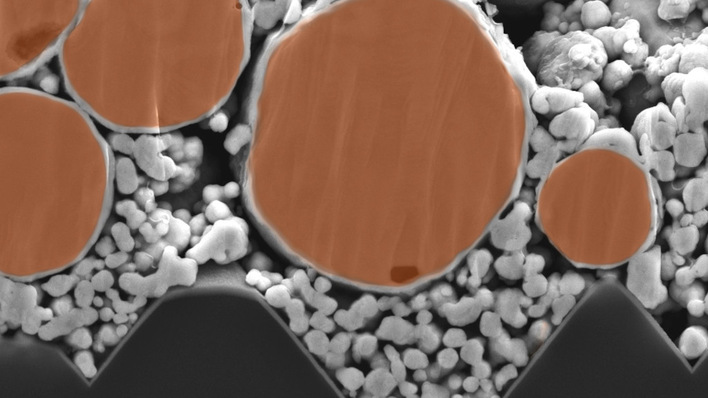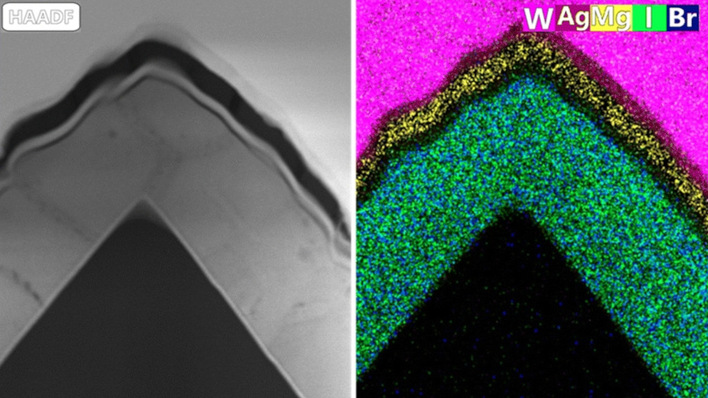Highly efficient and inexpensive to produce - perovskite solar cells have repeatedly caused surprises in recent years. Scientists at Forschungszentrum Jülich have now discovered another special feature with the help of a new photoluminescence measurement technique. This is because the loss of charge carriers in this cell type also follows different physical laws than those known from most semiconductors. This may be a key reason for the high efficiency. The results were presented in the journal Nature Materials.
There are great hopes for photovoltaics associated with perovskite solar cells, even if their stability still leaves much to be desired. Cells of this type are inexpensive to print and amazingly efficient. In the last decade, their efficiency has doubled to over 25 percent and is currently already on a par with classic silicon solar cells. Further improvements seem possible in the future.
Did you miss that? AI could improve the stability of perovskite solar cells
"An important factor here is the question of how long excited charge carriers are retained in the material," explains Thomas Kirchartz. "Understanding the processes is crucial to further improving the efficiency of perovskite-based solar cells." The electrical engineer heads a working group on organic and hybrid solar cells at the Institute of Energy and Climate Research (IEK-5) at Forschungszentrum Jülich.
It all depends on the service life
Light can release electrons from a bond. Energetically, they are raised from the valence band to the so-called conduction band, only then can they move through the semiconductor. Only if the lifetime of the excited state lasts long enough for the electrons to reach the electrical contact can they transfer their energy to the external circuit. An excited electron also leaves a hole in the underlying valence band - a mobile vacancy that can be moved through the material like a positive charge carrier.
It is mainly defects in the crystal lattice that ensure that excited electrons quickly collapse again. The affected electrons can then no longer contribute to the current flow. "This mechanism is also known as recombination and is the main loss process in every solar cell," says Kirchartz.
Recombination is crucial for efficiency
No solar cell is perfect at an atomic level; each of them has various types of defects due to the manufacturing process. These defects or foreign atoms in the lattice structure are the collection points where electrons and holes prefer to come together. The electrons then fall back into the valence band and become worthless for generating electricity.
"Until now, it was assumed that recombination is mainly triggered by defects that are energetically located in the middle between the valence and conduction band. This is because these so-called deep defects are similarly accessible to excited electrons and their counterparts, the holes," says Kirchartz. This is probably also correct for most types of solar cells.
Shallow defects dominate
However, he and his team have now disproved this for perovskite solar cells and shown that the shallow defects are decisive for the final efficiency. Unlike the deep defects, these are not located in the middle of the band gap, but very close to the valence or conduction band.
Also interesting: Longi reports 33.9 per cent for tandem cells made of silicon and perovskite
"The cause of this unusual behavior is not yet fully understood," reports Thomas Kirchartz. "The assumption is that deep defects simply cannot exist in these materials. This restriction may then also be one of the reasons for the cells' particular efficiency." (hcn)









